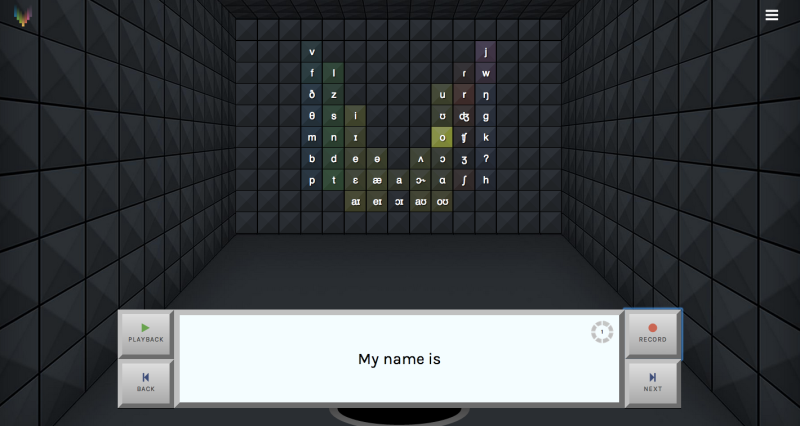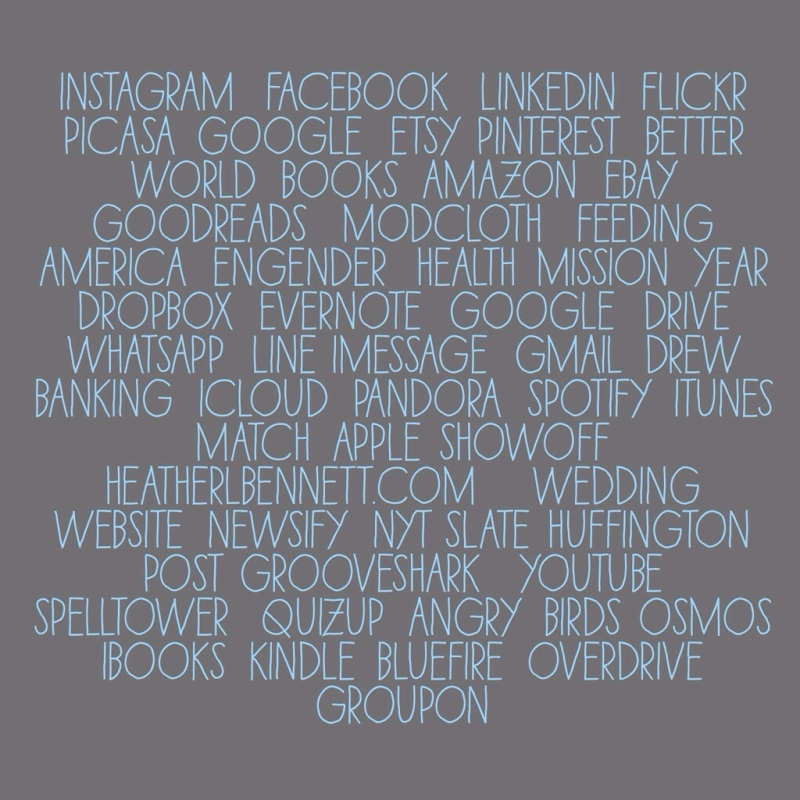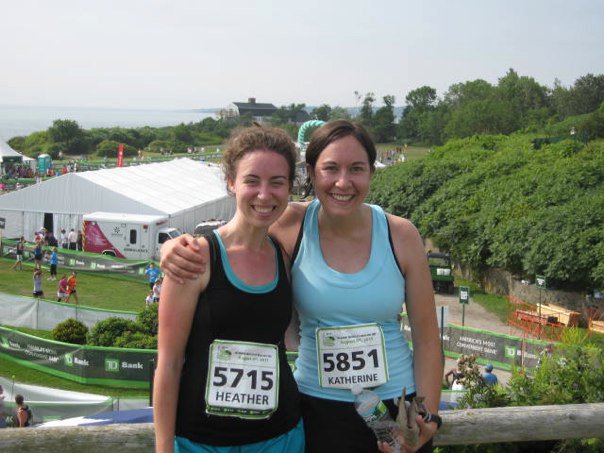I recently switched from my MacBook to an iPad because a.) my laptop is wearing out and b.) I’m going to be reading tons of ebooks and PDFs on the move this year due to the upcoming move to Singapore and I wanted something more portable for the numerous plane rides, bus trips, and subway commutes that are all part of living on the island. Since ebooks especially can be a pain to read on a laptop (especially on a moving vehicle), the iPad seemed like a win-win.
The only problem is an iPad isn’t really supposed to replace a laptop. It was designed as an entertainment device with some pretty wonderful features for personal movie viewing, e-book reading, photo sharing, social media use, and gaming. It does not come with built in word processing apps or a full keyboard or apps for reading PDFs or a spreadsheet program for keeping track of grades. iPad is not built for flash, so even viewing some websites can be a little tricky. So how to get it to do everything I needed and wanted it to do for the sake of my academic sanity in the coming years?
I did a fair bit of research (yes, it is a transferable skill…) before making the purchase and thought I’d share the most useful tips I gleaned along the way as well as some tricks of sorts I’ve picked up through using the iPad as a work device over the past week or so. Which isn’t to say I’m an expert or that everyone should make the switch – only that if you want to do so, this will hopefully give you an idea of what it takes in terms of preparation, hardware, apps, and financial investment.
Prep work:
Maybe people more tech savvy than myself could just sync up their iPad to their computer and go, but I found I needed to do a bit of prep work in order to adjust for a more limited amount of storage space on the iPad as well as for a lack of laptop to sync to at a later date, since I don’t plan on keeping both the iPad and MacBook. To that end, there were three big things I needed to find storage for ahead of time: documents, photos, and music.
1. Documents. Since my MacBook pre-dated the release of the Pages app (more on that below) my documents are still all Word documents, originally stored on my computer and an external hard drive, for backup. But I don’t use all of them all the time, so there was no reason to try to transfer them all to the iPad – web storage would be just fine. I chose Dropbox, though Google Drive or Evernote might have worked as well. It’s free, you can garner extra space for participating in their how-to demos and by recommending it to friends, and their iPad app looked easy to use. I downloaded the MacBook version first, dragged and dropped the files I wanted from my computer and hard drive into the Dropbox folder, and voila! They were all available online. And yes, there’s plenty of space. I have 3.2G total to use and only occupied some 40% of it with nine years worth of Word files and a fair number of PDFs.
2. Photos. These take up a ton more space – especially if they’re high resolution photos, like the 1200 from our wedding. So Dropbox wasn’t an option for all my photos (though the app does offer storage for photos as well). I could have made private albums on Facebook, but I wasn’t sure about available space and sometimes re-downloading photos from the site can be a hassle. After looking through other options (Picasa, for instance) I went with Flickr on this one. The site offers a terabyte of space, which I’ll never occupy, and the uploading process was simple, even from CDs. The web format is attractive and albums can be kept private for as long as I like. It did take a long time to upload the larger files, but I was able to work on other projects in the process, so it wasn’t too much of a nuisance.
3. Music. This was, alas, the file format that did not allow for a free solution. I couldn’t find any sort of free cloud format that provided enough space to store five to six thousand songs and I didn’t think it would be wise to use a full 28G of the 32G available on the iPad just for music. So to iTunes Match I went. It’s not a bad deal, really. For $24.99/year, I can store all of my music (up to 25,000 songs), access all of it via wifi on both the iPad and iPhone, and cache music on either device when I’m on the go. It isn’t the most perfect solution – caching music definitely takes some time, so I have to plan ahead for road trips or running – but it’s feasible and didn’t dig too deep into my pocket.
Hardware:
With prep work completed, I was ready to purchase the iPad along with two pieces of hardware to make the machine work more like a laptop (for me at least).
1. An external keyboard. I went with Apple’s bluetooth keyboard ($69) because I know there will be plenty of times when I just want to use the iPad by itself just for reading or browsing the web. I know others who swear by the keyboards built into cases, like these from Brooks Brothers, and that seems like a sound option if you don’t mind the extra accessory when you’re reading. I also wanted something that mimicked the keyboard on my MacBook fairly closely and thus far I’ve appreciated the similar feel of the keys, the presence of volume control key, and the familiar placement of the command functions. The only thing I’ve found slightly irritating is the necessity of turning off the bluetooth keyboard when I want to switch back to the pop-up keyboard on the iPad. But I think that’s just taking a little getting used to.
2. A lightning to VGA cable. This was a preemptive buy on my part and not necessarily something I’m going to use on a daily basis. Just a piece that’s good to have around for an academic, or anyone who frequently gives presentations, I think. Said cable (which retails for $49) will allow me to present slide shows, YouTube clips, and interactive maps, for instance, through the usual set up in a classroom. I used the equivalent cable for my MacBook at least twice a week when I taught this spring.
3. While I only found two pieces of hardware necessary to this early endeavor, there are a few cables and cords that would probably be useful or at least nice to have in the future. A lightning to AV cable would let me hook the iPad up to a tv for movie viewing via Netflix; an external mousepad might make document editing a little faster (though thus far just tapping and highlighting on the screen or using the keyboard arrows has been simple enough). If I was going to do more music recording via GarageBand or some serious podcasting, an external mic might also be nice.
Apps:
This has been the category with the biggest learning curve, a noticeable financial investment, and by far the most fun to figure out. I knew some of the apps I needed ahead of time, but I’ve been finding others as problems crop up. Here’s what I’ve found to be most useful or essential for productivity and play thus far:
1. Pages and Keynote. There’s a good chance I’m going to write some or all of my dissertation on this machine, so a word processing app was a must. There are other apps with fewer bells and whistles than this one, but after trying to format Publisher documents to no end of frustration over the last few years, Pages with its multiple document formats and easy to use templates was worth the $9.99. Ditto to Keynote (also $9.99), which will stand in for PowerPoint.
2. iAnnotate. I frequently utilize JSTOR, Sage, PubMed, ProQuest and the like for research purposes and I like the option of downloading, saving, and marking up a PDF version of an article. While you can read PDFs whenever you like on the iPad with Adobe’s free app, storing, organizing, and annotating is another story. I went with iAnnotate on this one because the review were better – though Good Reader is a little cheaper. iAnnotate allows for underlining, writing, highlighting, and commenting and there are additional markings for grades, bookmarks, stamps, etc. if you wanted to use it for grading and/or feedback. It syncs with Dropbox (hooray!) and allows for organization via file folders on the iPad. Nifty, right?
The only hitch so far is that some PDFs don’t allow me to use all of the features – for some files from Sage, for instance, I can underline manually with a stylus or my finger, but I can’t use the highlighter function. Files from JSTOR, by contrast, allow for the use of all tools. It’s not a huge deal, but I didn’t expect that particular limitation.
3. Kindle for iPad. iBooks just doesn’t carry everything, so occasionally I need to purchase an ebook from Amazon instead. I’m not a huge fan of this reading app – there’s no continuous scrolling, for instance – but it does allow for highlighting and commenting, which is helpful and it’s free.
4. FlickStackr. When I tried to access and organize some photos on the Flickr free app, it just wouldn’t work. I could view everything, but I couldn’t do anything with it. Enter FlickStackr, the companion app ($3.99). This is where I can organize, edit, share, and upload and it’s super easy to use. I’m a little peeved that I had to pay for it (was forced to, really) but it was an easy enough fix and it’s been worth the few dollars it cost.
5. Puffin Web Browser. Remember how iPad doesn’t run flash sites? Well that’s an issue when you want to chat remotely with someone for your bank, for instance, or you want to access the site of the DJ you used for your wedding so you can recommend him to someone else. Again, this wasn’t something I figured on, but it was a quick fix. Puffin Web Browser, somehow or another, runs flash. It has a free trial (14 days) and is only $2.99 after that. It’s faster than Safari and you don’t have to second guess whether a site will appear. It still has it’s limits – I can’t use Shutterfly or Blurb, alas – but seems to work for most of what I need it to.
6. KeepShot. What to do for photobooks, calendars, and kitschy Christmas mugs then? Enter KeepShot, a free app that works with Flickr and Facebook, has reasonably priced photobooks (50% off for new users, even!), and a fully customizable layout. It’s a great app – when it works. It definitely crashes pretty frequently and I’ve read that some users have difficulty ordering through the site (I haven’t tried that yet…). But if developers can fix the bugs (the app is still pretty new), this will be a wonderful thing. I’m holding out hope.
7. Blogsy. I’m writing to you today from an app, not from WordPress. Because WordPress, Blogspot, etc. haven’t quite gotten the hang of providing for mobile and iPad users yet. But again – a quick fix, and this time a free one. Blogsy syncs with multiple blog sites as well as with my Photos, Facebook, YouTube, Flickr, Instagram, and Picasa. I can type and edit and format and add photos in the app then publish directly to my site. It’s handy and easy to use with most of the bells and whistles you’d hope for – easy insertion of hyperlinks, font options, the ability to save drafts, and easy access to photos and videos. (Though I’m having some trouble locating the spell check, if there is one…) I won’t use this one a lot, because I’m terrible at remembering to blog half of what I think I might, but it will come in handy now and then.
8. And then there are the “just for fun” apps that are great for the occasional (or frequent) distractions. Netflix and Amazon Instant Video have apps. Spotify gives access to its radio stations, though not the entirety of its collection (which is a little disappointing). Heads Up is an easy, social, sometimes riotous game that combines Taboo and Charades and parts of Cranium. Feedly is a replacement for Google Reader and keeps me up to date on the blogs I follow, all in one place. And then there’s the Newsstand with at least partial freebies from the New Yorker, Economist, Atlantic, HuffPost Magazine, Ms., and the London Times, among others. I also added the NYT – a $1 subscription for 3 months digital access? Why thank you, LivingSocial app. Don’t mind if I do.
 This is a fun one, my friends. Today, I began donating my voice to the
This is a fun one, my friends. Today, I began donating my voice to the 
